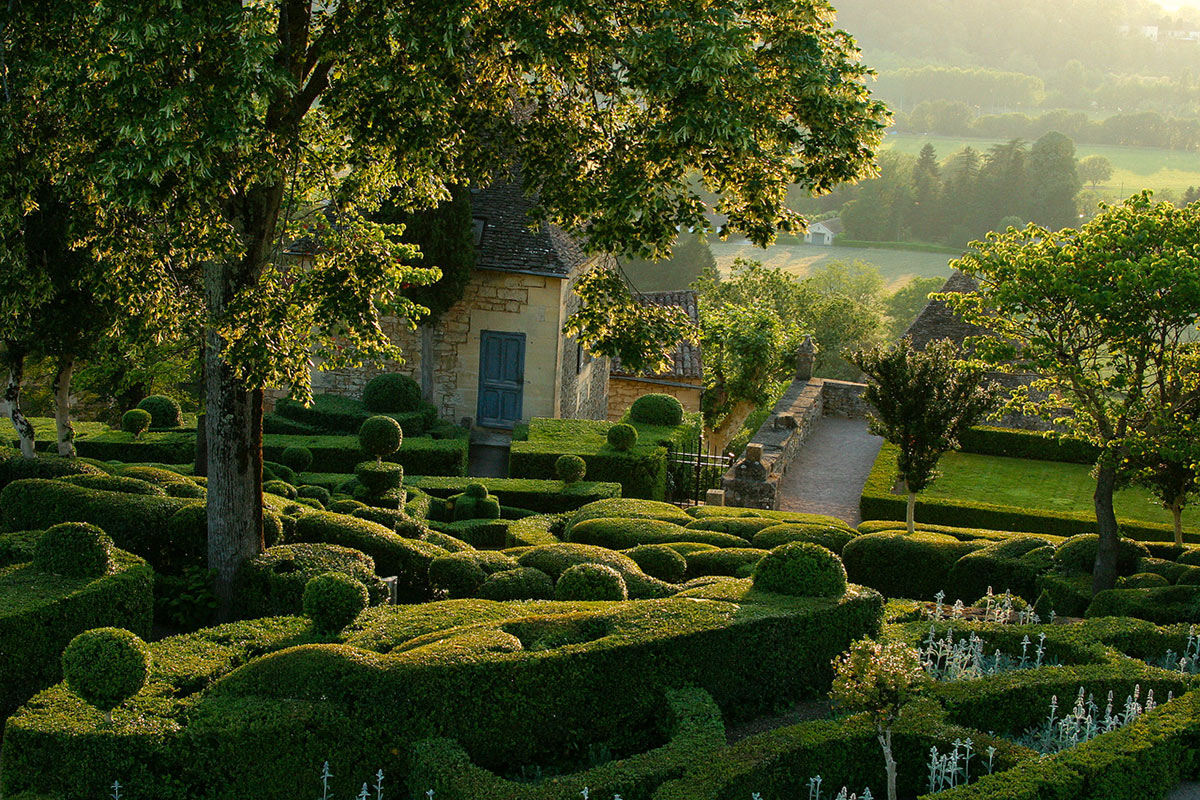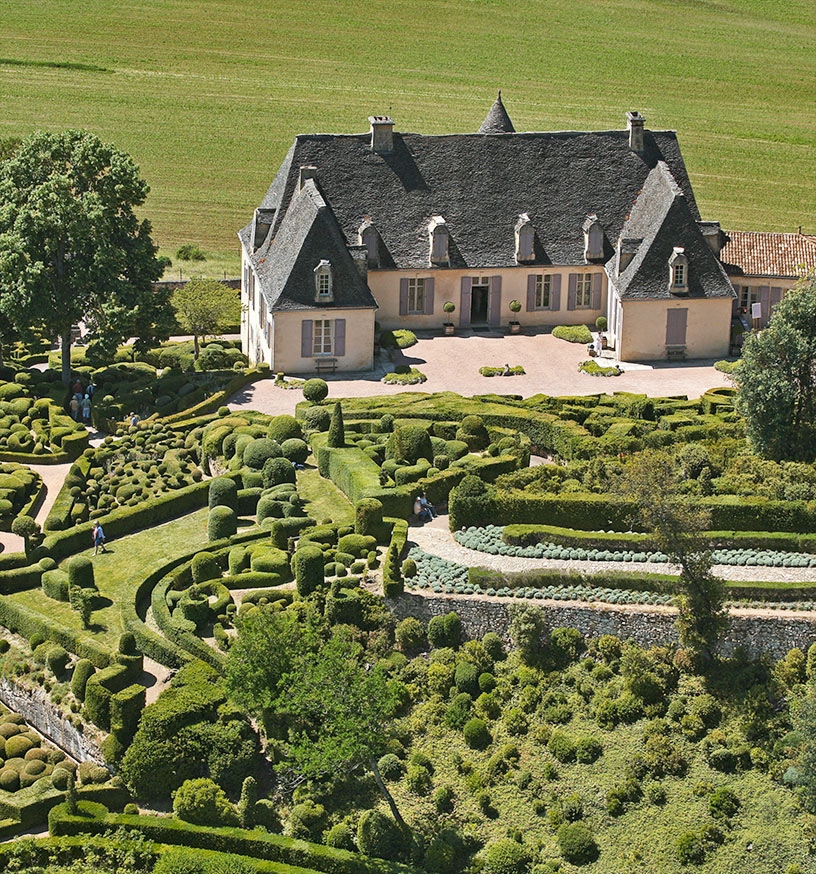Built on a rocky spur, the 22 ha park dominates the valley of its high cliffs
HISTORY
Marqueyssac is thus the starting point for anybody visiting the Périgord
Listed as a National Historical Monument, the romantic and picturesque Marqueyssac Gardens offer a 19th century stone-tiled castle and over 6 kilometres of shaded pathways lined with 150 000 hand-pruned boxwood, punctuated with belvederes, rockeries, waterfalls and greenery.
At Marqueyssac, boxwood is highlighted in many forms. Nowadays, the gardens are the most visited in the Périgord. 130 metres above the river at the Belvedere viewpoint, witness to a rich, historical past and a grand natural heritage, you will discover Périgord’s most magnificent panoramic view. Discover the valley, the castles and some of France’s most beautiful villages (Beynac, Fayrac, Castelnaud, La Roque-Gageac and Domme) from this exceptional viewpoint.
After extensive restoration work, Marqueyssac was opened to the public in March 1997. Today, it is the most visited garden in Périgord. The park, designed for walking, is situated on a spur and overlooks the entire Dordogne Valley with its chalky cliffs. It reveals the most spectacular panoramic view possible of Périgord.
The paths are organised into three circuits that lead to the Belvedere (le Belvédère – t), 800 meters from the chateau. This belvedere is a fabulous balcony, 192 meters high and 130 meters above the river, which unveils an exceptional panoramic view of the Dordogne valley.
Its layout with its sinuous paths, the roundness and rolling aspect of the boxwood give Marqueyssac softness and romanticism, contributing to the harmony that the gardens have with the hills in the landscape of the Dordogne Valley.
Architecture
In its current form, the chateau is an early 19th-century luxury residence, built on the eve of the French Revolution…..
The residence has two different sides. Facing the valley, Marqueyssac reveals a wide front flanked by a central tower containing the staircase. At the back, the layout is much more intimate, opening out onto the park which was reserved for the enjoyment of the residents.
Constructed with great simplicity, Marqueyssac displays a remarkable roof made from material typical of the region : limestone slabs (lauze) or stone tiles. The roof weighs more than 500 tons and was restored from 2011 to 2017.
In the park, much has been created to make the walks more interesting eg. belvederes, sinuous pathways, small staircases, three drystone huts, a large esplanade designed for recreation and elegant receptions, a small rotunda, a wayside cross, rock gardens, benches carved into the rock…
Vegetation
The Gardens of Marqueyssac strech along a spur on the Dordogne valley with an east and west exposure
The vegetation is quite remarkable because of the calcium soil and the lack of water also its particular aspect.
On the southern slope of the park, holm oak, traditional oak, maple & berry are planted. These trees which are usually found in the Mediterranean climate have adapted themselves to the dry soil of Marqueyssac. The dark and evergreen foliage of the holm oak is the origin of the « Black Perigord » in the area of Sarlat. On the contrary, on the northern side of the park which is more humid, can be found an atlantic vegetation eg. horbeams, rural maple and oaks.
In 1861, Julien de Cerval who was a passionate gardener inherited Marqueyssac and dedicated the last thirty years of his life to the beautification of Marqueyssac. He planted tens of thousand of boxwoods which give Marqueyssac a dominante green colour making it a unique garden.
The Bastion with its rolling aspect and with its sinuous paths is typical of landscaping done in France under Napoleon III..
The Bastion is similar as the gardens found in Italy and gives to Marqueyssac an Italian flavour because of its terraces and cypress trees.
On the entirely of Marqueyssac’s estate, the wild & romantic nature is set in a nexus of boxwoods.
Having a passion for agronomy, Julien de Cerval, was responsible for the introduction of the ornamental species found in the park : the lime tree, the Judas-tree, the liburnum, the plantain and the elm tree. Passionately interested in Italian culture, he planted cypresses and umbrella pines in Marqueyssac. Lastly, Julien de Cerval planted the small Naples cyclamen, which today forms a fabulous coloured carpet from August to October.
In 1996, towards the end of the restoration work an old stone path was found under the vegetation. Today as you walk along, you can smell the perfume of the herbs like santolina, rosemary or lavender perfectly adapted to the local conditions.



